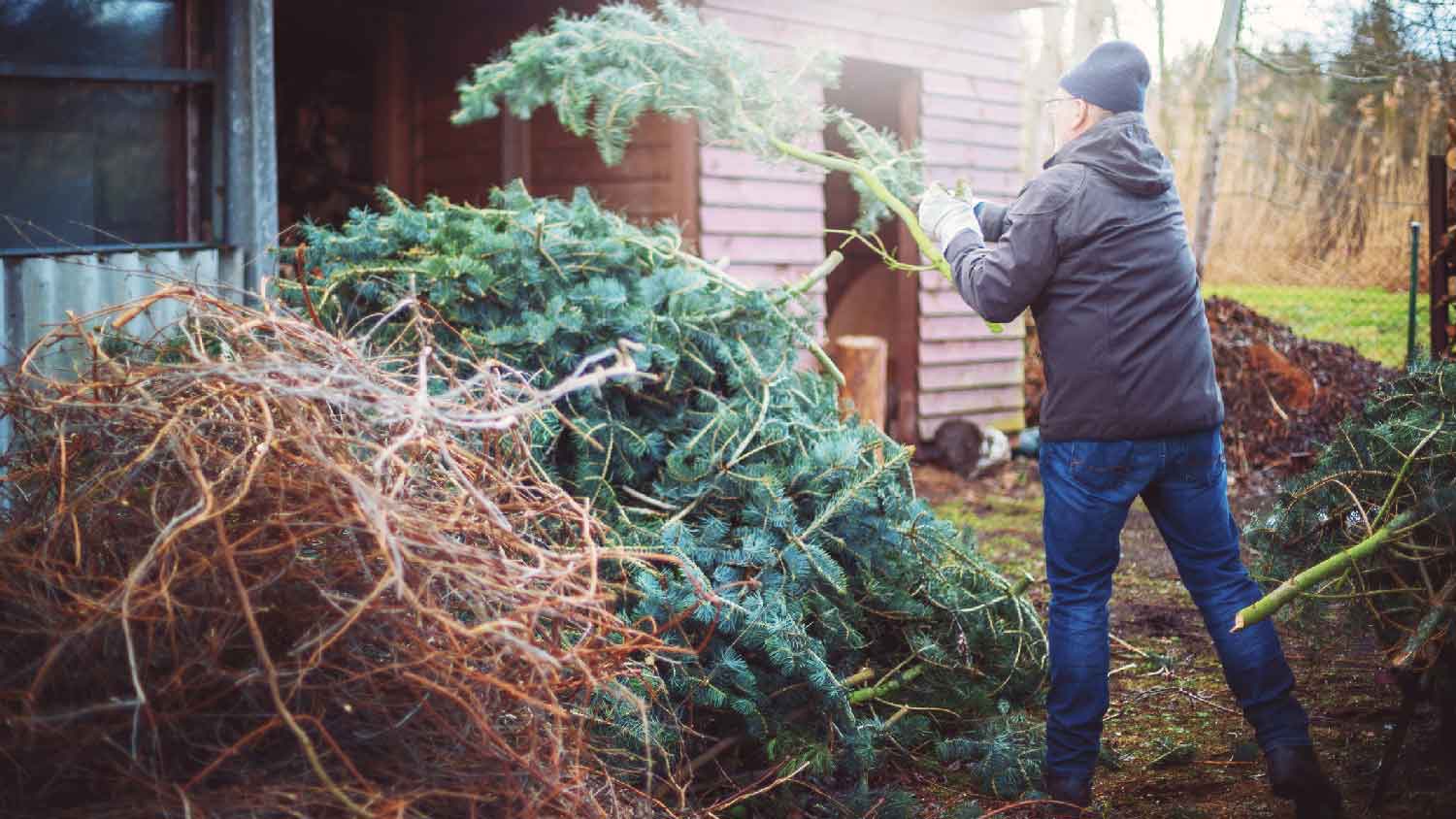
A yard cleanup can keep your lawn clean and prepare it for the next season. Find out the average yard cleanup cost and what can affect it.
A little TLC goes a long way for this landscaping project


Having lots of trees is a bonus in the summer months, when the shade helps keep your home and yard cool. However, when fall comes around and those trees drop their leaves, it can become a nuisance in your landscaping beds. The good news is it’s fairly easy to learn how to get leaves out of mulch—all you need is a bit of free time and the tools to get the job done efficiently.
One layer of leaves over mulch may not seem like a massive issue. And for the most part, it’s not. But when other layers begin piling on top of the first layer, and then rain falls to create a moist pile of dead leaves, your landscape beds could develop diseases like snow mold that affects your plants. So if you start to notice a lot of leaves accumulating in an area, it’s best to remove them now.

The least complicated way to remove leaves from mulch is to pick them up with your hands. This approach is especially helpful for small areas with tight corners that a rake can’t reach. If you’re worried about your hands getting dirty or scratched up, grab a pair of garden gloves to protect them. You can also enlist the help of a kneeling pad to keep your knees from aching. Place the leaves in a pile to either put in a yard bag or mulch later on.
Standard-sized rakes are too big for this job, which is why you’ll need a narrow rake to corral any leaves that have settled. Make sure to rake lightly so that you don’t pull up piles of mulch or disturb plants that you don’t want uprooted.

If you have a leaf blower on hand, select a low setting to gently blow piles of leaves in the direction of your choosing. If you don’t own a blower, most standard sizes cost anywhere from $150 to $400. There are some lightweight options available for $30 to $50, if you are on a budget—or you can rent one or borrow one from a neighbor, friend, or family member.
Another option is to use a leaf vacuum on a low suction setting to suck up the leaves from your mulched beds. Just be mindful that if debris such as rocks get sucked into the vacuum, they could cause a clog.
Although it will take more time to install upfront, putting landscaping fabric over your mulch will cut back on labor and ensure leaves don’t become tangled in unwanted areas. Landscape fabric is designed to provide a barrier between your leaves and the mulch, so all you have to do when your leaves are done falling is collect what’s on top of the material.
To install, begin in early fall and cut holes in the fabric where plants are located. Secure the fabric with landscaping pins, then leave it until it needs replacing, typically every 2 to 4 years.
The leaves that constantly fall in the autumn months can be more manageable with the helpful tips below.
There’s no sense in scheduling a leaf cleanup day when rain or strong winds are in the forecast. It’s best to remove leaves in dry, still conditions—plus, a windy day will likely dump more leaves onto your property, adding to your workload. Check the forecast for the week before you gather your supplies.
Include your kids, other family members, or friends in a leaf cleanup day to make the task go by quicker. When one or two people rake while another scoops leaves into a bag that someone else is holding, the project can go by in a flash.
It can be a hassle to stuff leaves into tons of yard waste bags and figure out how to dispose of them all. As an alternative, you could add them to your compost pile. Their carbon-rich makeup will provide added nutrients to food scraps that then turn into plant-boosting matter.
If you don’t have the free time or tools to take on this project, you can hire a leaf removal company near you to get the job done in no time. Although you’re likely to save time if you hire the task out, be prepared to pay more than if you decided to DIY. Leaf removal and blowing services cost anywhere from $200 to $500 per lawn.
From average costs to expert advice, get all the answers you need to get your job done.

A yard cleanup can keep your lawn clean and prepare it for the next season. Find out the average yard cleanup cost and what can affect it.

Autumn leaves are beautiful but also leave quite a mess to clean up. This guide will help you budget for your leaf removal cost this fall.

If your yard gets covered in leaves, you need the help of a trusty leaf blower. Follow our guide to blow leaves where you want them to go.

A leaf removal service can clear your yard of fallen leaves. Learn why to hire a leaf removal service, what to look for, and how the service works.

Struggling to keep up with tree debris from those pines in your yard? Learn how to remove pine needles from your lawn to keep it healthy and looking tidy.

If your yard has seen better days, a professional clean-up may be in order. Use these lawn care questions to prep yourself for a conversation with a pro.